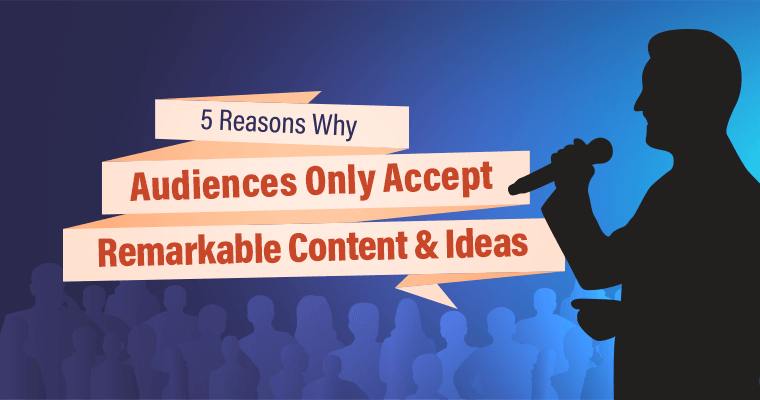When information started to be plentiful online, some of us rushed to store it on floppies, CDs, memory sticks, and—more recently—cloud systems. We did this, at least at first, because we were afraid it wouldn’t last. Not only were we wrong, but the quantity of information has increased dramatically over the last few years. It’s impressive, looking back, how all the boundaries vanished—both the ones between readers and writers, and the ones between experts and copycats.
According to a Vcloudnews infographic, the numbers are dramatic:
- 2,500,000,000,000,000,000 (2.5 quintillion) bytes of data are created daily
- 90% of all the data in the world was created in the last two years
- 4.6 billion pieces of content are produced daily
We’ve reached the point where people won’t even consider accepting meaningful, specific information unless we are careful with how it is delivered. There’s an exception when it comes to mindless entertainment online, but since you’re reading this article, I suppose you’re not interested in the mysterious success of cat videos—so we’ll be talking about documented content.
We Forgot the Cost of Information
We’re surrounded by so much information that simple delivery is no longer enough. Newsworthiness almost doesn’t exist anymore (except for the most serious and possibly threatening events).
Today, this information equation is quite simple—you provide me with the most remarkable content put in the most visually attractive way, and I will refuse to pay for it—after all, I deserve all the unlimited access; it’s on the web, right?
Let’s trace back to see how we got here. If you’re looking for the short version, competitive advantage is what brought us here—the struggle of all publishers to be read and to develop a constant, loyal audience.
No matter how powerful a story is in itself, we’re going to like it more if it features a story that intrigues us, feeds our curiosity, and satisfies our answers in the end. Alex Turnbull documented in a case study how the presence of a story at the beginning of the article increased the number of readers. Storytelling remains a very powerful tool when used correctly.
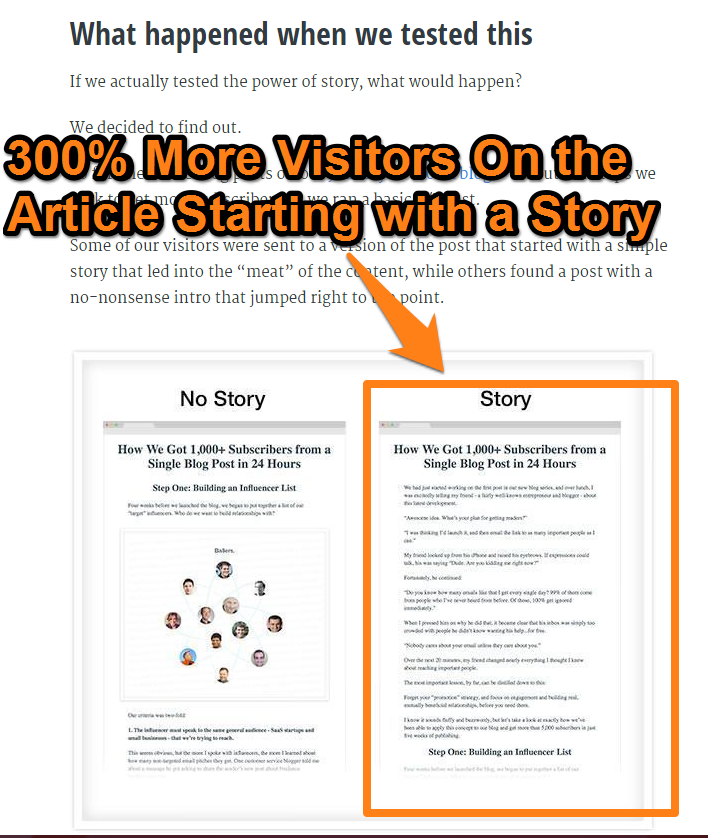
Reading Habits Influence our Attention Span
Our attention span is 8 seconds and falling.
Because technology today can store so much information, we can’t keep track of it anymore. Writers in the 17th century claimed they had read everything written in their language throughout history. Today, this statistic is unachievable even to those of us who try to keep themselves up-to-date in their fields of expertise.
There are various theories and practices starting from the online behavior of readers. While some are struggling to put all their content above the fold, others have underst00d we’re used to scrolling.
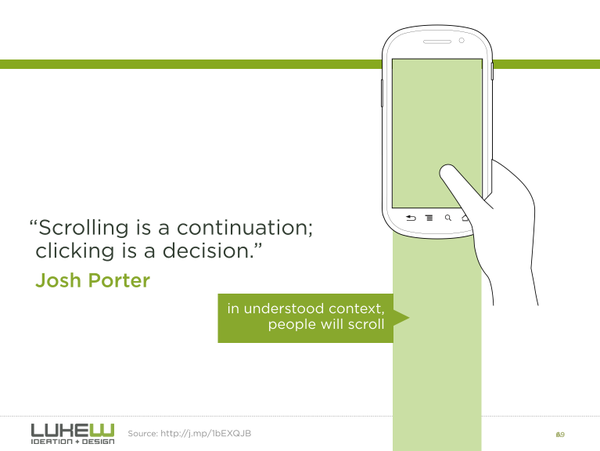
Approximately 66% of our attention is spent below the fold, especially when it comes to content, and we’re impatient to get over the (often) boring introductions directly to the heart of what interests us.
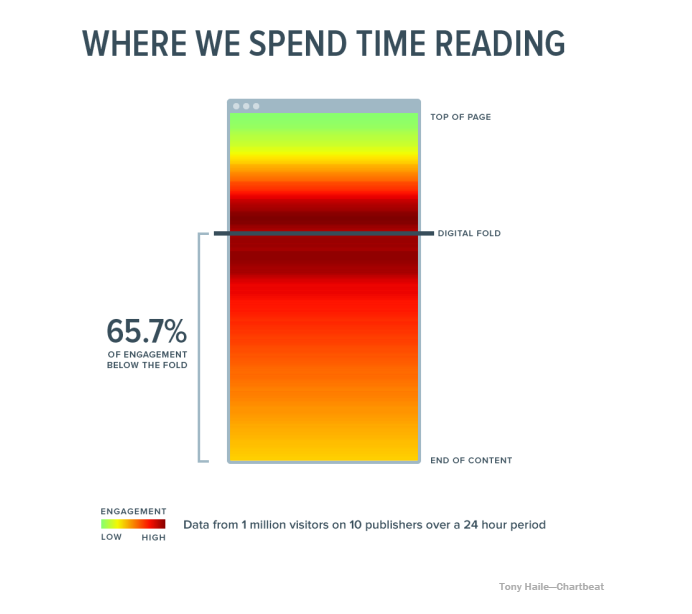
Content marketing costs 62% less than traditional marketing and it’s three times more efficient. In order to be pursued, our customers have to be given an extraordinary experience—otherwise, they won’t even bother. I can’t stress enough that being shared doesn’t mean being read. Nor does being clicked on.
Crossing From Online to Offline
The online and the offline often find themselves in competition, although we sometimes hate to admit it. Some of the most ingenious campaigns now focus on being relevant and honest, in order to attract as many visitors as possible and increase their ROI.
Let’s see what Amazon does to encourage customer loyalty. A study found that sticker shock increases cart abandonment by 75.6%. Using an upfront fee to defeat this withdrawal mechanism, the company established a yearly subscription granting unlimited access to two-day shipping.
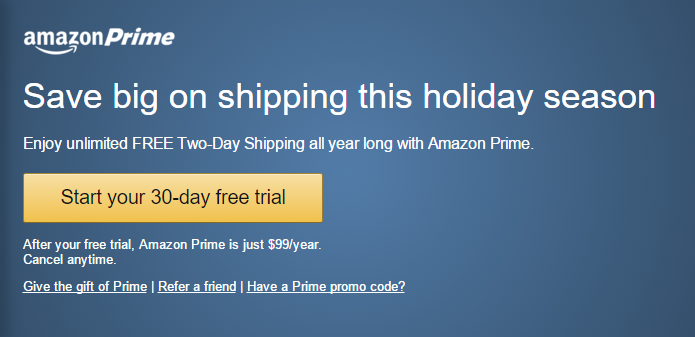
The results were exciting: customers who have a Prime account spend almost three times more on Amazon than those who don’t, according to their latest report.
This study found that need fulfillment is one of the key contributors of trust, which generates reader loyalty online, regardless of the service.
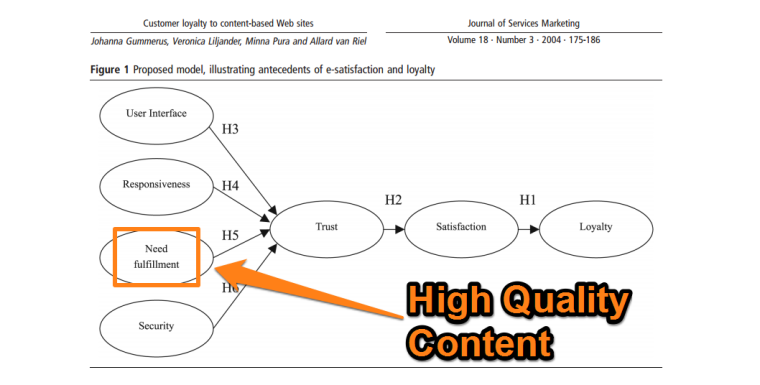
Although the web is on a constant struggle to increase readers’ loyalty, quality content isn’t enough, for the same reasons I stated earlier.
Whenever it’s possible, in offline promotions, brands have started to appeal to multisensory integration of the message in order to grant the most unforgettable moments for those who enter their shops, or those who try out their products and services.
More and more shops use special perfumes and fragrances, or custom music, to make people resonate with their brand and create a lasting identity. Burberry is an example. The associations we make inside a store follow us at home and become part of our blurred memories, colliding the brand with the alien characteristics we witnessed.
What Burberry has done is blur the divide between physical and digital; the store was designed to stand as a physical version of its website. The company has made it clear that it wants to be known as a current brand that is in touch with today’s technology and its shop achieves this.
Another one of my favorite examples is Virgin Atlantic. What makes us most volatile and unpredictable as customers are not being loyal. This, in turn, originates in the fact that our experiences are not tangible in the majority of cases.
This is why we offer tokens at weddings—because food, dancing, drinking, and having fun are all perishable.
So here’s what they did: they imprinted the back of their salt shakers with the message ‘Pinched from Virgin Airlines’ when they noticed that so many of them were stolen. It couldn’t have been because their clients were poor—they weren’t!
They weren’t all kleptomaniacs either. The only reasonable explanation was that their customers saw those salt shakers as tokens from their trips. The airline managed to turn this to their favor.
Nothing was ever the same after 1982 when Milliman scientifically proved that slow music increased spends in supermarkets by 39.2%.
How could you even hope to compete with that?! Online, everything’s virtual—from our customers’ accounts on our sites to the means of communication. A chat box, however personalized, could never compete with a real-life conversation—a site will find it borderline impossible to imprint a lasting experience on a visitor’s mind.
In reality, although the environments should not be compared, it’s impossible not to weigh one against the other.
If I’m interested in purchasing a puzzle, for instance, I won’t think separately of stores and sites—I will immediately identify a number of both stores and sites and, depending on what I find in each of them, I will make a decision.
In this context, the advantage of web content is that it’s fast—at my fingertips, whenever I need it. Getting information isn’t an obstacle anymore.
The web has to be a place with plenty of resources that I can access each time I need an answer, a lesson, or entertainment. Not satisfying this need of instant gratification, a website wouldn’t stand a chance to a real-life experience. Aside from competing with the real world, online services also compete with each other—and it’s a struggle.
You’re expected to maintain relevance when your audience’s needs are so volatile and the directions they develop towards so unpredictable.
Visual Information Makes us More Thorough
Here’s the deal: The more we try to put information in pretty wrapping, the harder it will be to present it without visual support.
Readers weren’t born this pretentious. We taught them to be like this.
Every attempt to make web content more interesting contributed to this borderline surrealistic change to the way we perceive content online.
We started making infographics and, steadily, we got to this:
- visual information increased by 9,000% since 2007
- color visuals increase willingness to read by 80%
- we receive 5 times more information than we did in 1986
- we don’t read more than 28% of the words when visiting an online page
The Guardian understood these stats before most and created a documentary on palm oil. It’s not the first time they made their stories interactive, but it’s surely one of their most appreciated initiatives. Utilizing sounds and pictures to advance into the story, everything’s made to capture your attention.
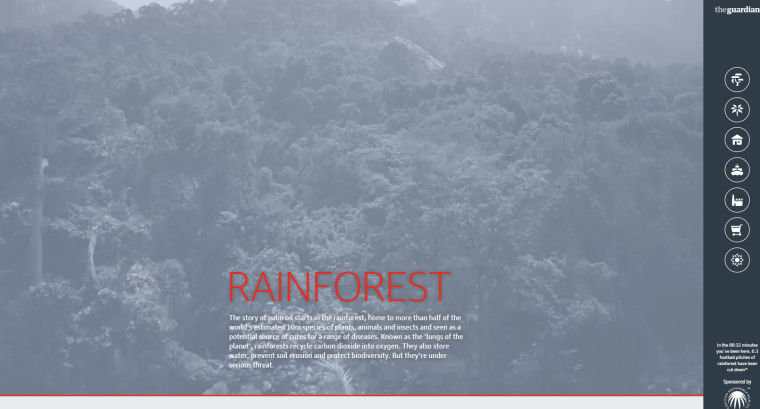
The same interactive model was used to present the history of World War I, under the tagline Why We Should Never Forget.

The project was very successful among history fans, both as link juice and social media visibility, proving that a story well said never gets old.
![]()
World War I has been extensively treated in media and arts, but none of these mattered when the information was wrapped in such an irresistible package.
This only proves, once more, that we exclusively accept great content within a captivating story—placed in a context that eases our focus and to which we can relate.
Advertising, Gone Native, Raises the Standards of Storytelling
We’re so used to ignoring information, that when someone is trying to provide us with information they will need to put in effort. It is exponentially harder to make someone pay attention to something you’re trying to sell to them. You have to be exceptional!
Native ads provided a great solution, at least for a while–but we still prefer content writing more.
It’s true we allocate 53% more attention to native ads than we do to the classic banner—but how much is 53% more than almost nothing?
The paid tweets Airbnb used to promote their new program of monthly sublets was a real success.
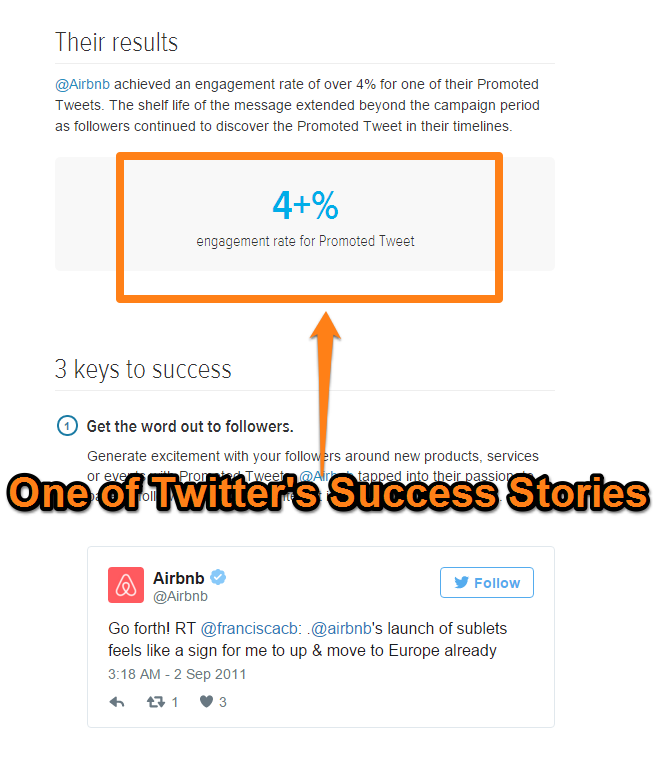
The interest for native advertising has increased exponentially since 2013. However, compared to content marketing, the topic hasn’t been as trendy as you’d expect.
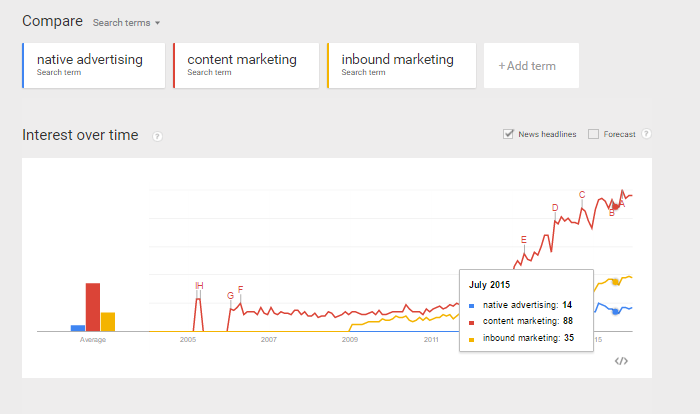
The point? Not even advertising survived the change in our informational paradigm. Actually, nothing did. We don’t read the same, we don’t search for music the same, we don’t watch movies the way we did 20 years ago.
And, most certainly because our apprehension styles have changed so much, we filer most of the information—like a parasite we’re not interested in accommodating.
The number of advertisements has increased, as has everything else online. We can’t afford to spend time on information we’re just remotely interested in. Everything’s getting smarter, from computers to phones to other interactive platforms. Selling intent can often be confused with authentic stories, which makes it even harder to persuade the audiences, who are now more skeptical than ever.
Take this example from IKEA. In attempt to promote their new collection of wireless chargers, they sponsored this video.
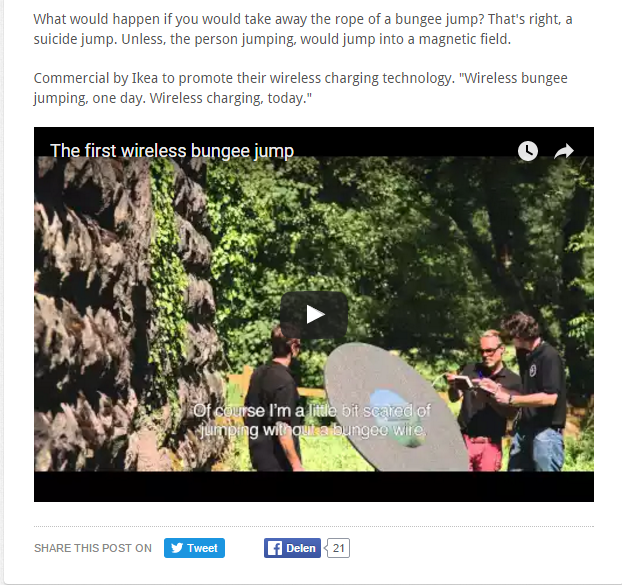
After an entire virtual hype was created, the video became viral very quickly. However, not many people realized the entire story was a fake, and most of the comments on social media portray them deeply impressed with the initiative.
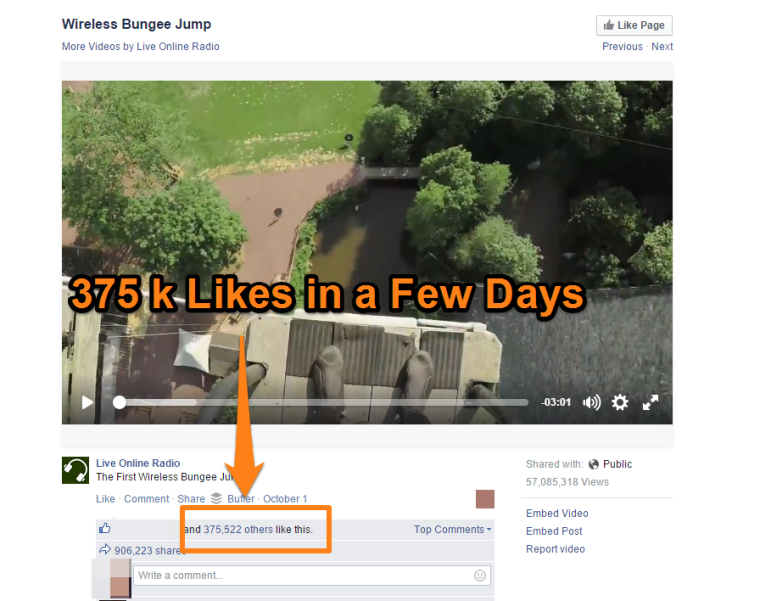
Let’s not forget another factor—this number of shares is from an online radio page, not the official IKEA Belgium Facebook Page, where the video only had around 10k views. The Youtube video also had lots of views, compared to the number of likes on the IKEA Belgium Facebook page.
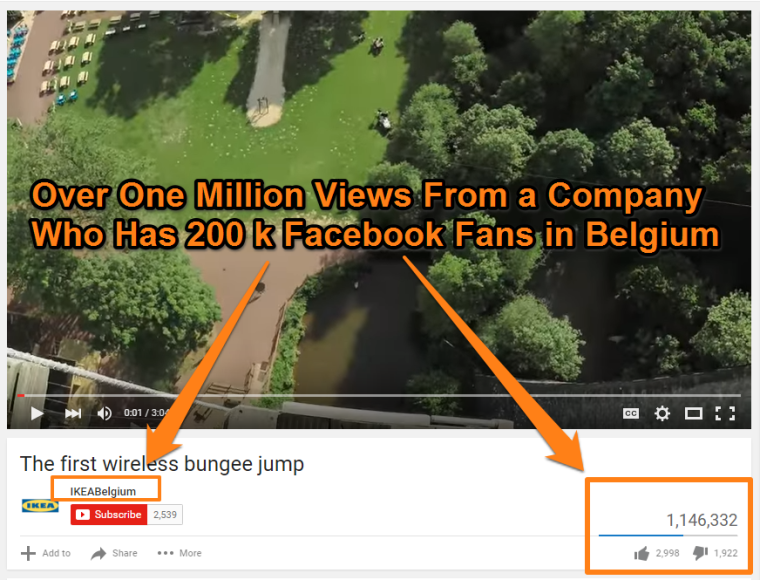
This teaches us some important lessons about web trends:
- Not all the great, appreciated ideas on the web are true. Some are fake—but nobody cares, people love them anyway;
- You constantly compete against those (not necessarily true) ideas;
- It’s not a rule that your story will get popular through your official social media account—and there’s no way you can change that.
Conclusion
The web isn’t a friendly place if you’re not a captivating storyteller. It is hard to succeed even when you have something to say, particularly when addressing a niche—the more specific the part of your industry you’re targeting, the sharper the rules.
Content writing has become a complex tool used to inform and engage very characteristic-specific targets and, as promising as it sounds, it comes with its perks.
Image Credits
Featured Image: Image by Razvan Gavrilas
All screenshots by Razvan Gavrilas. Taken January 2016.

